How to Secure a WordPress Website: 9 Tricks to Keep Your Website Safe
If you click to purchase a product or service based on our independent recommendations and impartial reviews, we may receive a commission. Learn more
One of the most important parts about designing and managing a WordPress website is keeping a close eye on website security.
After spending hours customizing your design, creating your content, and optimizing your user experience, the last thing you want is for it to be vulnerable to online threats.
WordPress itself is a secure platform (we wouldn’t recommend it if it wasn’t!) but there are additional steps you can take to ensure your website is as secure as possible, allowing you to provide the best user experience.
Getting to grips with website security can be daunting, though, which is why we’ve put together these nine tricks to keep your WordPress website safe and secure – as well as exploring why WordPress security is so important.
Why Is WordPress Security Important?
WordPress is a great platform for those looking for a website builder that’s flexible, customizable, and most importantly, secure.
WordPress’s team is dedicated to making sure that WordPress sites are as secure as possible, regularly bringing out automatic updates that’ll help to improve the security of your website.
Nothing online is 100% safe, though, and sometimes even the most secure platforms can face data leaks, hacks, and attacks. That’s why it’s so important to take extra steps to make sure your WordPress website is as secure as it possibly can be.
If hackers can infiltrate your website, they can undertake various actions: such as installing vicious malware into the code of your website, or stealing sensitive information about both you, your business, and your users.
Unsurprisingly, these attacks can have a major impact on your customers and your brand. In our recent report on data breach statistics, we found that, on average, a data breach costs $210 per record. Pretty scary, huh?
Over 40% of all websites on the internet in the US are powered by WordPress, which is a pretty impressive market share. This does, however, make WordPress sites a significant target to hackers looking to infiltrate websites.
It’s therefore crucial that you’re willing to put as much time and effort as possible into securing your website as you dedicate to the design and content stages.
What Security Threats Does WordPress Face?
When it comes to security threats, there are some common types of website attacks that WordPress websites face that you need to be aware of when securing your website.
Brute Force Attacks
A brute force attack refers to the process of entering multiple username and password combinations over and over again until you find a successful pairing. This kind of attack is trial and error and requires hackers to attack the WordPress log-in page with “brute force”.
Unlike some website builders, WordPress doesn’t limit the number of attempts you have to log in to a website, which is exactly what makes it vulnerable to a brute force attack.
Even if hackers are unsuccessful at guessing your login details, repeated attempts to log in to your WordPress dashboard can begin to wreak havoc, slowing down the speed of your website. You may also find that your hosting provider temporarily suspends your account whilst you’re under a brute force attack, to reduce the impact on other websites sharing the same server.
SQL Injections
A WordPress website uses what’s known as a MySQL database to operate. An SQL injection is when a hacker gains access to your WordPress database, and therefore all of your WordPress data.
An SQL injection allows hackers to create a new admin user account which they can use to login and access your full website. Hackers also use SQL injections to virtually “inject” malicious code into your website, including links to spam websites.
Cross-Site Scripting
Cross-Site Scripting (XXS) attacks are the most common vulnerability across the whole of the internet.
Cross-Site Scripting works by attackers finding ways for users to unknowingly load and open web pages that feature insecure java scripts. These scripts will load without a user’s knowledge, and will then steal personal data from the user’s web browser.
File Inclusion Exploits
PHP is the code that runs your WordPress website, and vulnerabilities here can easily be exploited by hackers.
A File Inclusion Exploit is when vulnerable code is used to load remote files, giving hackers access to your website. The main worry with this kind of attack is if hackers gain access to your configuration PHP file, which is one of the most important files within your WordPress installation.
Malware
Malicious Software, commonly known as malware, is code that’s utilized by hackers in order to gain access to a website to steal sensitive information.
If your WordPress website has been hacked, then the likelihood is that malware has been inputted into your website’s files – so always keep an eye on ones that have recently changed.
The most common malware attacks on WordPress websites include backdoors, pharma hacks, and malicious redirects.
So how can you secure your WordPress website from these security threats?
#1 Use a Quality Web Host
Your web host is effectively where your website lives on the internet. It’s the place where your website is ‘stored’ so that users can access it with ease.
The web hosting provider you choose can have a major impact on various aspects of your website’s performance, including load speed and search rankings. It can – you guessed it – also have a major impact on how secure your website is, too.
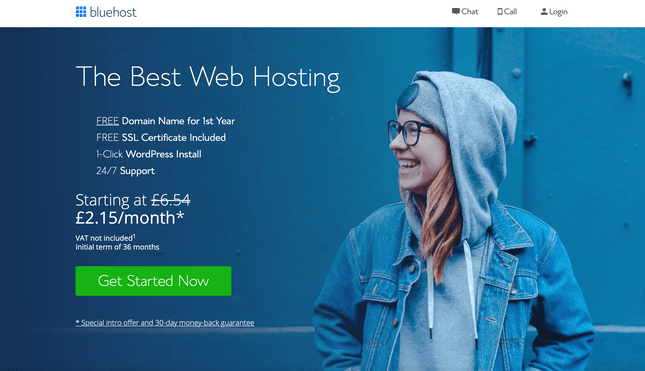
The best quality web hosts will continually update their services in order to respond to new online threats and potential security breaches. Your web host should also provide you with a way of backing up your website, as well as offering round-the-clock support should something go wrong.
Once you’ve chosen your host, it’s also important to keep a close eye on how it’s performing. An increase in hacking attempts or frequent downtime may suggest that your hosting provider isn’t taking the security of your website as seriously as it should be. In which case, you probably need to think about switching to an alternative web host.
#2 Perform Regular WordPress Updates
WordPress is constantly evolving and providing new updates for users. It’s essential, therefore, that you keep up to date with these updates, and ensure that you’re always using the very latest version of WordPress.
It’s not just the WordPress core operating system you need to keep up to date, you also need to ensure you’re using the most up-to-date version of any plugins and themes.
If something has been updated, it will be for a reason. Often, new updates will fix any bugs or security issues that had been flagged in older versions, so keeping everything updated will help you to ensure that your WordPress site is as secure as possible.
After all, 55.9% of entry points for attacks are known to come from vulnerable plugins (i.e. those that haven’t been updated).
Most of the time, WordPress updates are incredibly minor and – whilst you may not notice a difference – potential hackers certainly will!
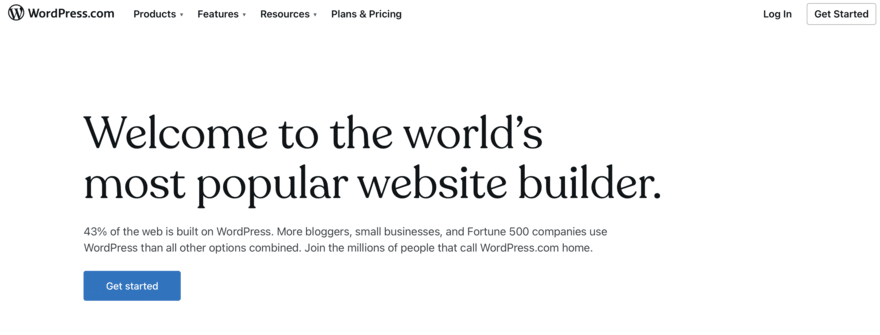
Find Out More
Check out our ultimate guide on Website Updates – why they’re important and a step-by-step look at how to update effectively.
#3 Use a Reputable Theme
When it comes to choosing a WordPress theme, you might think that the only aspect to consider is what it looks like. Well, you’d be wrong! The theme you choose can have a major impact on the security of your website, too.
Try to resist selecting a theme that just looks good and make sure that the one you install on your website meets WordPress standards.
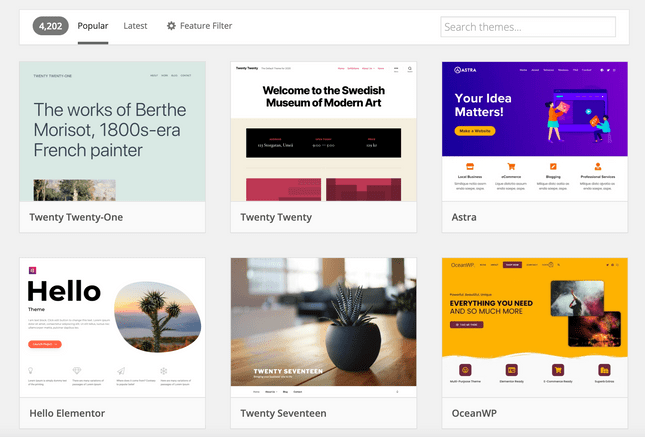
One of the key things to look out for, and avoid, are nulled themes. A nulled theme is a version of a legitimate, premium theme that often contains malicious code and malware. These themes will usually be sold at a lower price than the originals in order to attract customers.
A nulled theme is illegal, and you’ll receive no technical support from the developers – so, if something goes wrong, you’ll be left to sort it out all by yourself.
It’s no surprise that hackers target WordPress themes. After all, the most popular WordPress theme has reportedly made over $36 million. It’s a big business.
When choosing a theme, the best thing to do is ensure you select one from an official WordPress-approved developer. This way, you’ll know it features no malicious code, and the theme developers will be on hand to offer installation help, should you require it.
Take a look at the reviews of the theme you’re interested in. If they’re good, you can presume it’s safe to install.
#4 Enable HTTPS
Installing an SSL certificate and running your website on HTTPS is one of the very best ways that you can secure your WordPress website.
HTTP is the process of transferring all of the data that makes up your website to the browser trying to access it. This is, of course, pretty important if you want users to actually be able to visit your website and see your content.
The problem with HTTP, however, is that hackers can easily infiltrate the sharing process, and intercept the data being shared by your site and the user.

HTTPS solves this issue. It effectively encrypts any of the data that’s traveling between the website and the user, ensuring it can’t be accessed by a third party. Enabling HTTPS, therefore, is crucial to the security of your site.
In order to implement HTTPS, you’ll need an SSL certificate that tells web browsers that your website is secure, and that any data is encrypted. Typically, your web hosting provider will include an SSL certificate in your hosting package.
Once you’ve obtained your SSL certificate, it’s simply a case of implementing HTTPS. While HTTPS was once only necessary for websites handling sensitive data (such as ecommerce sites taking credit card details), it’s now an essential security step for websites of all kinds.
#5 Secure Your Login Procedures
Like most online accounts, you’ll need to set up a username and password for your WordPress admin account. When you set it up, think carefully about the password you choose.
We all know some of the common tips for creating a strong password: using a mixture of letters, numbers, and symbols, including lower and upper case letters, and resisting the urge to use the same password for every online account!
But one of the finest ways you can ensure that your login procedures are as secure as possible is by enabling two-factor authentication. This is where you’ll provide two different sets of log-in credentials.
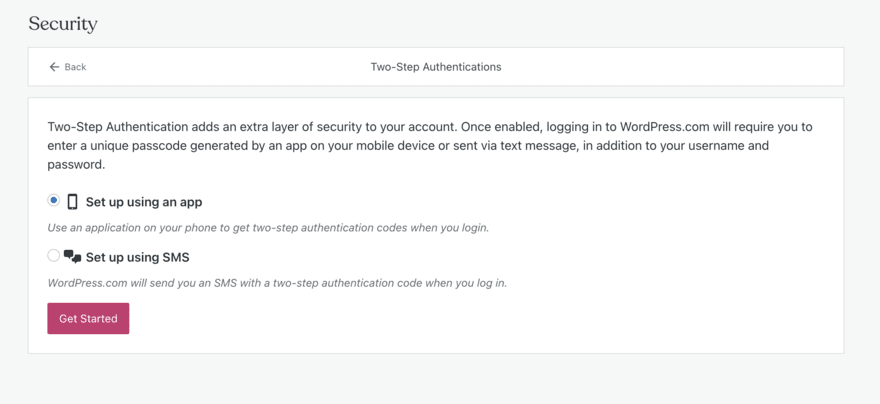
For example, you’ll likely set up a username and password, but you can then also add various security elements: such as a security question, a secret code, a backup email, or an authentication code sent to a chosen phone number.
Two-factor authentication is one of the best ways of protecting all of your online accounts, not just your WordPress website.
#6 Backup Frequently
Despite your very best efforts, sometimes the worst happens, and hackers manage to infiltrate your website.
It doesn’t have to mean the end of your online presence, though. If you’ve been regularly backing up your website, you should be able to easily restore it to its former glory.
Having a recent backup available will allow you to restore your website to how it was before the hackers hit, allowing you to get back online as quickly as possible.
To backup your WordPress website, you can use either specific plugins designed for this purpose – such as JetPack – or you can undertake a manual backup within the WordPress control panel.
So remember to back your website up frequently. Try to create a schedule for backing up your website, and – more importantly – stick to it!
Save your backups in multiple different external locations – like a physical hard drive – in order to ensure that you’ll always have easy access to a recent version.
When you undertake a new backup, don’t be tempted to immediately delete the old one. Your most recent backup may have an unsolvable issue, so it’s always good to have a backup of your backup…
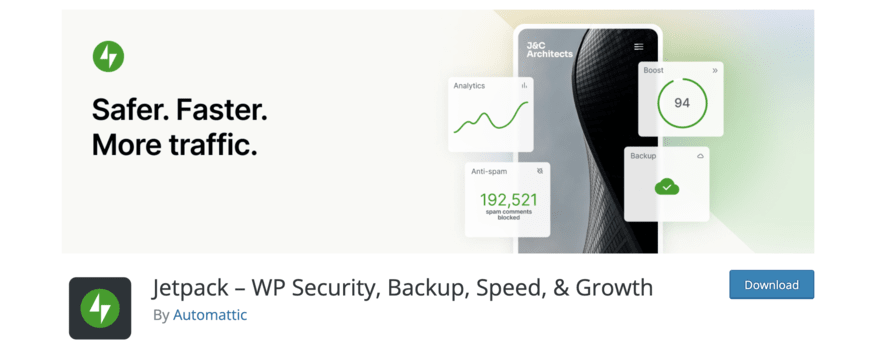
#7 Remove Unused Plugins and Themes
WordPress has over 58,000 plugins available. Yes, you read that right – 58,000!
With so many WordPress plugins to choose from, it’s no surprise that people forget which ones they’ve downloaded and installed. Often, you’ll find WordPress users have various plugins installed that aren’t even active. While this may not seem like a big deal, unused plugins and themes can end up having a significant impact on the security of your WordPress website.
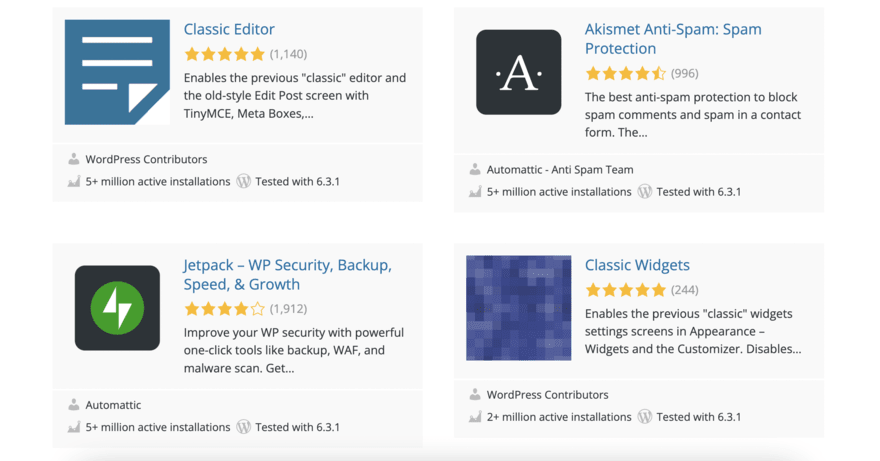
Sometimes, hackers will be able to infiltrate older themes and plugins and use them to run malware on your WordPress website. If you’re hoarding old themes and plugins, it’s easy to forget which ones you’ve got installed – and thus which ones could be hampering the overall security of your site.
The best way to avoid an old plugin or theme impacting your site security is by regularly removing any that you no longer use. Simple!
Find Out More
Looking to update your plugins? Our list of the Best WordPress Plugins covers our top choices across a range od catgoriesm including SEO and security!
#8 Utilize a Content Delivery Network
A Content Delivery Network (CDN) can be a powerful tool to have up your sleeve when it comes to keeping your WordPress website secure. In fact, some WordPress experts would go as far as to call them essential.
So what is a CDN? Put simply, a CDN is a network of servers spread worldwide, each of which has a copy of your website that users can access.
Using a CDN for your WordPress website comes with a host of benefits, including faster load speeds and increased website performance, as well as the one we’re focusing on in this article, increased security.
Some of the main security benefits of using a CDN for your WordPress website are:
- Advanced firewalls to protect log in pages
- Free SSL certificates
- Catching and filtering malicious traffic
- Act as a reverse proxy, masking the origin servers IP address
- The scattered CDN network is able to withstand DDoS attacks (Distributed Denial of Service)
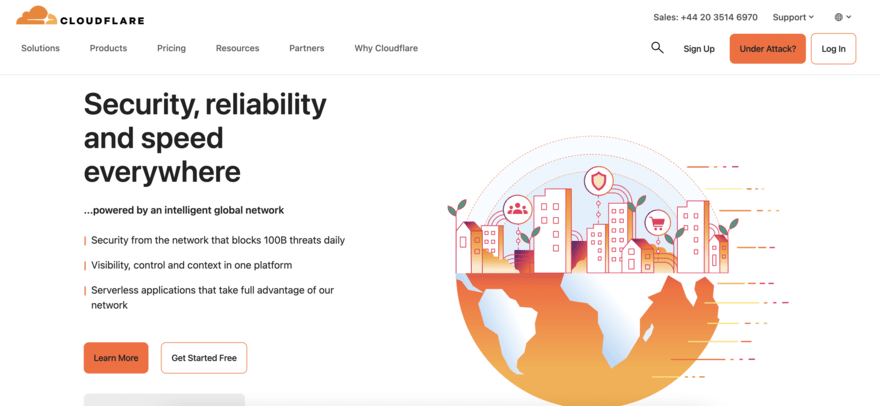
How to Integrate a CDN on WordPress
- Sign up for your chosen Content Delivery Network.
- Most CDNs also act as a DNS and require you to use their nameservers. However some will provide you with a CNAME that you will need to add to your current registrar.
- Follow the instructions of your chosen CDN to complete the set up.
- Download the WordPress plugin for your chosen CDN (always check the reviews first!)
#9 Leverage Security Plugins
We’ve already covered the importance of removing unused WordPress plugins, but did you know there are loads of plugins focused on website security?
Security plugins can be a useful addition to your WordPress website and offer an extra layer of protection for both you and your users.
WordPress security plugins can provide security to defend your website from multiple security threats such as malware and brute force attacks as well as hacking attempts.
There are hundreds of different security plugins to choose from, but some of the best that we recommend are:
- Wordfence
- Sucuri Security
- iThemes Security
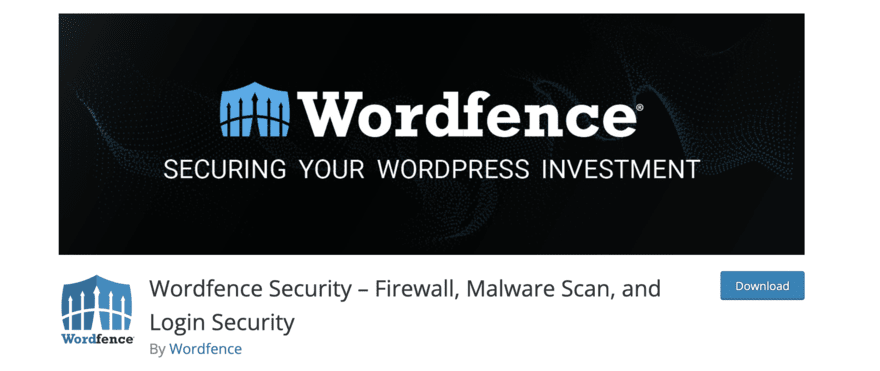
WordPress Security Tricks: Summary
Keeping your WordPress website secure is crucial. Not only would a security breach be frustrating after putting so much time and hard work into your website, but it can also impact your brand. Nobody is going to return to a website where their personal data was stolen – let alone buy from it!
To recap, our 9 top tips and tricks for keeping your WordPress website secure are:
- Use a Quality Web Host
- Perform Regular WordPress Updates
- Use a Reputable Theme
- Enable HTTPS
- Secure Your Login Procedures
- Backup Frequently
- Remove Unused Plugins and Themes
- Utilize a Content Delivery Network
- Leverage Security Plugins
The security of your WordPress may be important – but that doesn’t mean it needs to be hard. WordPress itself is an incredibly secure platform for building websites, but – by implementing these additional tips as well – you can make sure that your website’s in the best possible position for fighting off a potential cyber-attack of any kind.
As you improve your site’s security, our Website Security Checklist can help you keep track of your progress!
Leave a comment